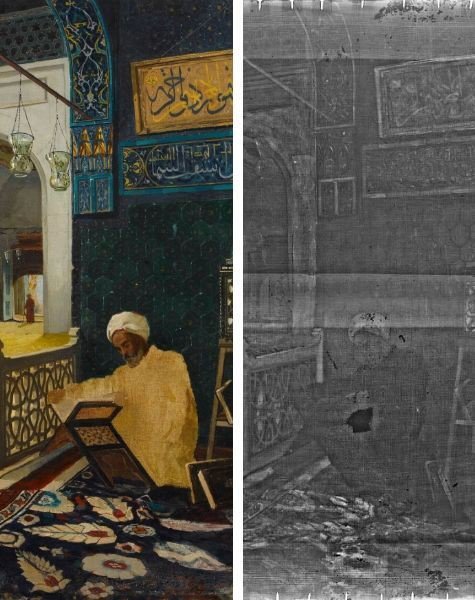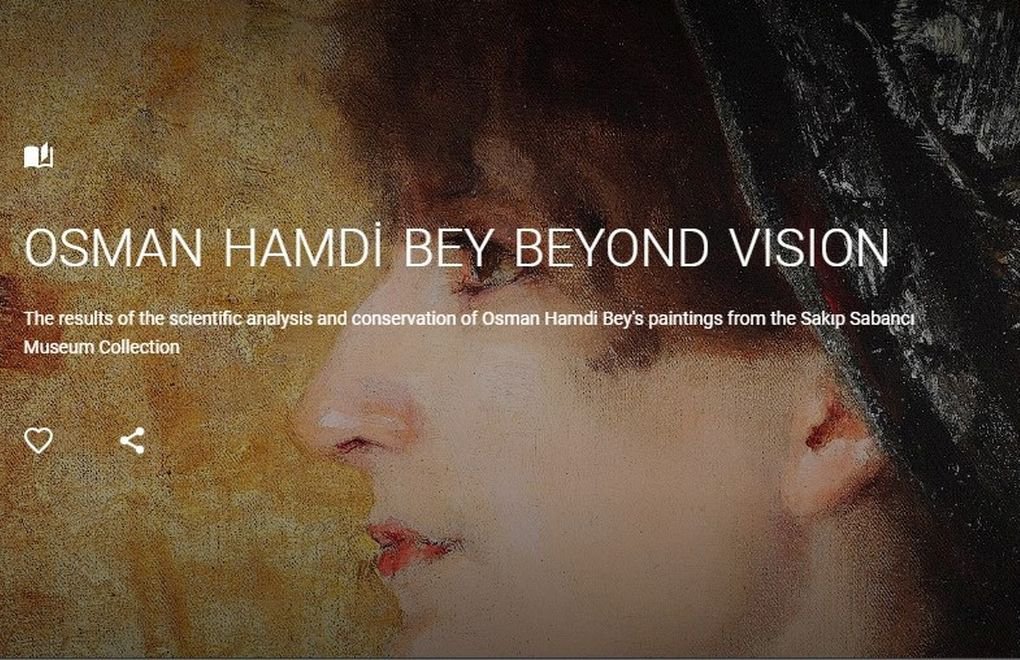Click to read the article in Turkish
An exhibition based on analyses of six paintings of Osman Hamdi Bey, a prominent Ottoman artist, has been made available on Google Arts and Culture.
X-ray imaging and pigment analysis were performed on the paintings to give clues as to how the details, which cannot be seen with the naked eye, can contribute to Ahmed Hamdi Bey's art's interpretation.
 X-ray imaging of "Hojda reading Koran"
X-ray imaging of "Hojda reading Koran"
The "Scientific Analyses and Conservation of Osman Hamdi Bey's Paintings" project, a joint work by Sabancı University, Koç University and İstanbul Technical University, was completed in two years.
The six paintings shown in the "Osman Hamdi Bey Beyond Vision" are originally in İstanbul's Sakıp Sabancı Museum. It includes information on the findings regarding the techniques employed by the artist in these paintings.
The works included in the exhibition are Portrait of Naile Hanım, Kokona Despina, Hodja Reading the Koran, the Petitioner, Flowers in a Vaze and the Mosque.
About Osman Hamdi Bey
Osman Hamdi Bey was an Ottoman administrator, intellectual, art expert and also a prominent and pioneering painter.
He was also an accomplished archaeologist and is regarded as the pioneer of the museum curator's profession in Turkey. He was the founder of Istanbul Archaeology Museums and of İstanbul Academy of Fine Arts, known today as the Mimar Sinan University of Fine Arts.
Osman Hamdi Bey was born in 1842 in İstanbul and died in 1910 in Eskihisar. He was the son of İbrahim Ethem Paşa, who served as the Grand Vizier of the Ottoman Empire in 1877 and 1878.
(Portrait: Emmanuel de Dieudonné)
(AÖ/VK)




